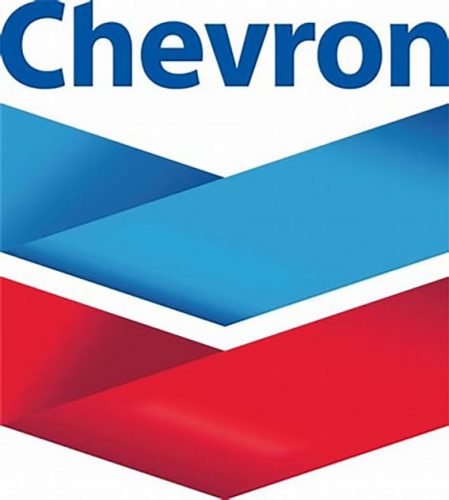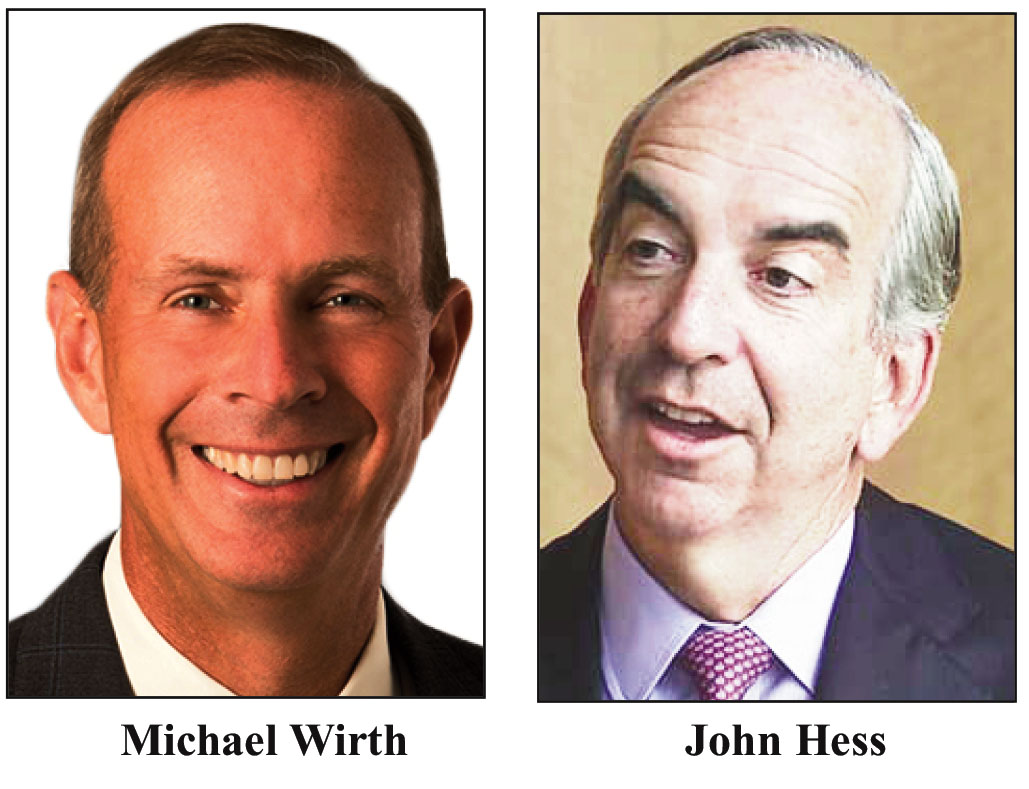Chevron has agreed to buy Hess for US$53 billion in stock to gain a bigger US oil footprint and a stake in rival ExxonMobil’s massive Guyana discoveries in a move which will bring another US super-major to the Stabroek Block.
According to Reuters, the Chevron deal announced yesterday and a US$60 billion acquisition by Exxon earlier this month will add years of oil and gas production to the two top US producers’ portfolios, much of it from US shale. And the deals will leave European oil rivals that had shifted their focus to renewable energy further behind in fossil fuels, the report.
Up to press time there had been no reaction from the Guyana Government to the deal. Georgetown had been trying to woe Chevron to take up a stake in the local industry and had been hoping that it would do this via bids for new offshore blocks which were recently up for auction.

Chevron also has growing business in Caracas following the easing of US sanctions on the Maduro administration.
“This is great for energy security: It brings together two great American companies,” said Chevron CEO Michael Wirth, who has bolstered the company’s shale oil and gas holdings by acquiring U.S. rivals PDC Energy and Noble Energy.
The combination of Hess, PDC and Noble will bring Chevron’s total oil and gas output to about 3.7 million barrels per day (bpd), Reuters said. It will expand Chevron’s shale output by 40% to1.3 million bpd, putting it neck and neck with Exxon’s projected shale output following its Pioneer Natural ResourcesPXD.N acquisition.
The combined company will expand Chevron’s oil production in less risky regions by adding to its output in the U.S. Gulf of Mexico and by bringing it into the Bakken shale in North Dakota.
The deal gives Chevron a 30% stake in the Exxon and CNOOC 0883.HK Stabroek oil block in Guyana, which is expected to triple to more than 1.2 million bpd by 2027.
“This deal is all about the world-class Guyana asset, which is by far the crown jewel in the Hess portfolio,” wrote Capital One Securities analysts in a note, Reuters said.
Guyana has emerged as one of the world’s fastest growing oil province following more than 11 billion barrels of oil and gas discoveries since 2015.
CEO John Hess said the government of Guyana and Exxon would welcome Chevron’s entry into the country’s oil fields.
John Hess told Reuters he has been in talks with Wirth for about two years.
“We eventually talked about each other’s companies and the strategic fit,” Hess said.
Reuters said that the executives have known each other for many years, having previously been partners in U.S. Gulf of Mexico fields, and regularly discussed their business.
“This is a discussion that goes back a number of years over a variety of conversations in person, on the phone and over dinners,” Wirth told Reuters.
Goldman Sachs was the lead adviser to Hess while Morgan Stanley was the lead adviser to Chevron.
Shares sold off in midday trading yesterday with Chevron down 3.3% at $161.25 and Hess falling about1% to $161.33. Both companies’ share track crude oil prices, which dropped on yesterday.
According to Reuters, Chevron offered 1.025 of its shares for each Hess share, or about $171 per share, implying a premium of about 4.9% to the stock’s last close. The total deal value is US$60 billion, including debt.
Reuters said that the agreement follows Exxon’s rapid-fire deals since July for top U.S. shale producer Pioneer and Denbury DEN.N. Those $64-billion combined transactions put Exxon atop U.S. shale and solidified the firm’s nascent carbon storage business, Reuters said.
RBC analysts said they were surprised by the deal’s timing, and had expected Chevron to bide its time after Exxon’s mega deal.
The deal faces regulatory reviews, but Wirth said he is not expecting anti-trust concerns.
He added that the combined companies expect to generate about US$1 billion in cost synergies within a year of its closing.
Chevron said it would sell between US$15 billion to US $20 billion in assets and plans to spend between US$19 billion and US$21 billion a year on major projects after the deal closes.
Once it closes around the first half of 2024, the Hess CEO will join Chevron’s board of directors, Reuters said.
“We’ve got too many CEOs per BOE (barrels of oil equivalent), so consolidation is natural,” said Wirth, adding the world could expect to see other oil tie-ups.
Reuters added that the recent deals are a financial flex by U.S. oil and gas companies that have kept investing in fossil fuels as European rivals turned their attention to renewable fuels. Chevron and Exxon accumulated huge profits from strong energy prices and demand since Russia’s invasion of Ukraine.
Chevron said it tends to ramp up its share repurchases to the top of its US$20 billion annual range, if oil prices remain high, and will increase its annual shareholder dividend by 8%.
Chevron will increase buybacks by US$2.5 billion after the transaction, Wirth said.
“Shareholders of both companies will benefit from the stronger free cash flow that will more than double over the next five years,” Wirth told Reuters.
The consolidation, however, has drawn rebuke from environmentalists who see it undercutting climate goals.
“With this deal, Chevron is betting on the failure of the Paris Climate Agreement,” said Mark van Baal, the founder of Follow This, an activist shareholder group.
“Big Oil needs to change or Paris will fail,” he added, referring to 2015 Paris Agreement to limit global warming.
Many others weighed in on the deal.
According to Reuters, the Royal Bank of Canada said that “given that Exxon Mobil had effectively taken itself out of the running for large-scale M&A (mergers and acquisitions) following the recent Pioneer deal, we would have thought Chevron could bide its time, and hence we are a little surprised at the timing of this deal.
“It does address the concerns with Chevron’s portfolio – namely over concentration in the Permian and lack of depth in growth elsewhere, however it comes at a price given the relative multiples between the two companies.
“In the end, Chevron walks away with a stronger, more diversified portfolio, which should bode well for shareholders over the long term, but in the near term, the news could weigh on the shares”.
MKP Advisors said that Hess has been touted as a potential target for the super-majors for some time; it had been mainly the stance of John Hess as a non-seller that was perceived as the reason why this has not happened before. Entering his 70th year, it seems he has got to the point where he sees a transition of Hess to a new ownership structure is appropriate.
Peter McNally, Third Bridge said: “The recent flurry of acquisition activity from Chevron and Exxon Mobil reminds Third Bridge experts of the building of the “super majors” that began 25 years ago, an era that transformed the oil industry into the massive companies that we see today.
“Back then, the super majors were consolidating to drive costs lower. Today, the companies being acquired today like Hess and Pioneer Natural Resources have more concentrated asset bases and expertise built in developing specific resources”.
Robin Helander of Rystad Energy said: “North America-based M&A has surpassed US$130 billion prior to the Chevron-Hess merger, setting a record high over the previous seven years. The stage is certainly set for increased M&A and industry consolidation, given the record profits generated last year, where public E&Ps (exploration and production companies) increased their collective cash reserves on balance sheets by 50% to nearly $300 billion.
“On the deal itself, the Chevron-Hess merger is expected to have a significant impact on the shale oil industry with Chevron becoming the second-largest shale producer in the United States. The merger is also likely to lead to increased M&A and industry consolidation in the North America shale sector”.
On September 25th, Reuters reported that Chevron Corp plans to add 65,000 barrels per day (bpd) of Venezuelan oil output by the end of 2024 through its first major drilling campaign in the nation since Washington allowed it to restore production clipped by U.S. sanctions.
The effort could help Venezuela keep lifting crude production and speed Chevron’s goal of recouping US$3 billion in unpaid dividends and debt from its projects in the country.
Reuters said that Chevron’s joint ventures with Venezuelan state oil company PDVSA now produce some 135,000 bpd and have exported an average 124,000 bpd to the U.S. this year, according to independent estimates and shipping data, near levels they had before Washington imposed sanctions in 2019.
Current oil flows mark a 70%-increase from average output in 2022.
Chevron’s recent contribution to Venezuela’s crude output has been significant as the OPEC-member country tries to stabilize and increase production to pre-sanctions levels.
Almost all of the country’s 70,000-bpd output increase so far this year has come from the Chevron-PDVSA projects. But to go further requires large specialized drilling rigs that might be difficult to find in Venezuela, the people said.
Chevron’s production target of reaching 200,000 bpd by the end of next year could go far to helping Venezuela achieve its aim to surpass 1 million bpd, from an average of 785,000 bpd so far in 2023, Reuters added.
The California-based company’s campaign calls for addition of at least two powerful drilling rigs. The equipment will be installed initially at the Petroindependencia project in the Orinoco Belt, Venezuela’s main oil-production region, one of the Reuters sources said.
Two other joint ventures, Petropiar also in the Orinoco Belt and Petroboscan near Lake Maracaibo in the country’s Western region, will next receive the rigs. The idea is to drill two wells per month at the Orinoco, that source said.
The drilling plan will not require new U.S. approvals because the areas involved are included in Chevron’s license, received in November, the sources said.
But it will require an oilfield supplier able to provide 1,000-1,500 horsepower rigs – a difficult task in the current environment in Venezuela, Reuters’ sources added.






